Pets and Animal
WHAT YOU NEED TO KNOW ABOUT Dog Bite Attorney
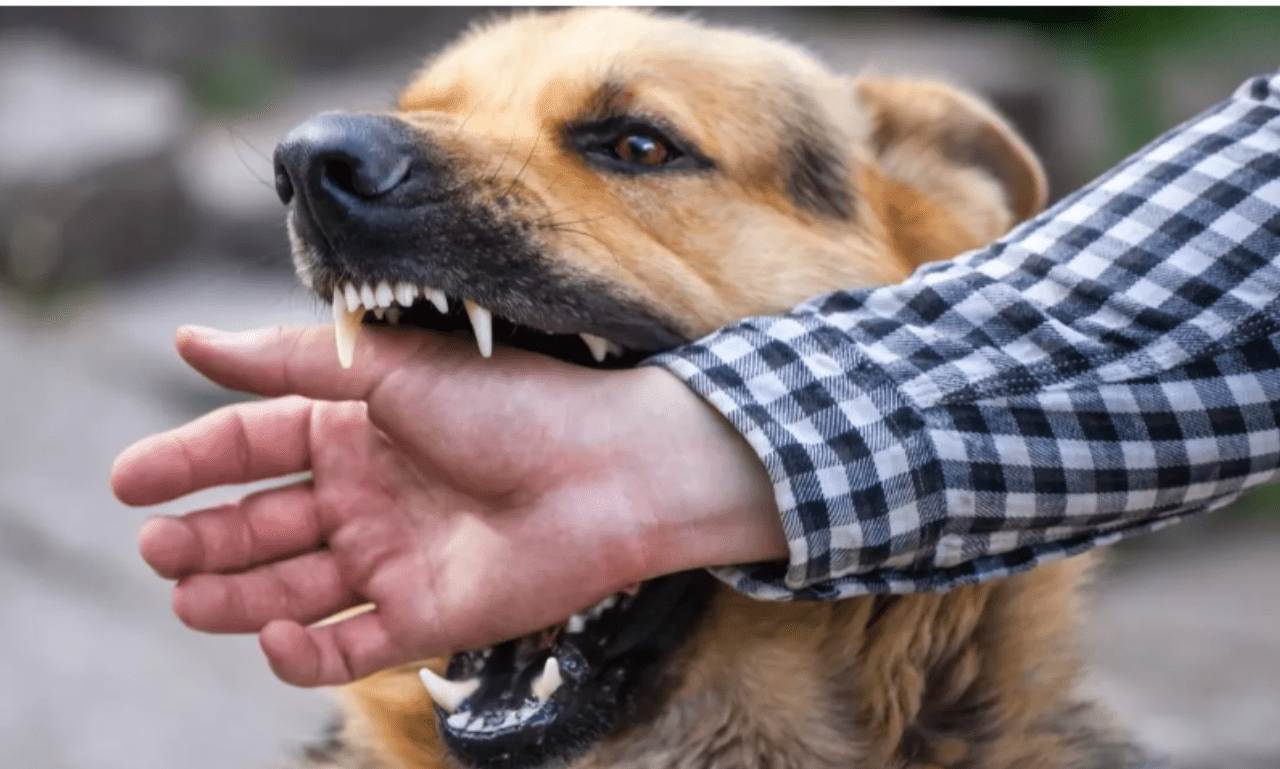
Dog bites can cause severe injuries, emotional trauma, and significant financial burdens. In case you or your closed one has been bitten by a dog, then it will be wise to hire the services of an ardent Dog Bite Attorney . Dog bite lawyers are legal experts who work to understand intricacies of any case and help the victims get the compensation they are owed. It is strongly recommended that one gets the services of a dog bite attorney,
Understanding Dog Bite Laws
Every state has its own laws regarding dog bites, so it is helpful to learn as much as you can about the laws in your state. Generally, there are three categories of dog bite laws:
- Strict Liability: The dog owner is responsible for any harm his dog inflicts to a person or any other mammal, irrespective of the previous conduct of the dog, or the owner’s option to know that the dog is aggressive.
- One Bite Rule: It means that the owner can only be held legally responsible for the harm done should have known that the dog is dangerous and was prone to biting individuals.
- Negligence: In this case the victim is required to demonstrate that they were bitten by the dog through their owner’s negligence.
A dog bite attorney who specializes in dog bite cases should be able to explain such laws and equip him/her with the relevant legal procedures to follow in handling your case.
Why Hire a Dog Bite Attorney?
Hiring a dog bite attorney is crucial for several reasons:
Expertise in Personal Injury Law: Personal injury lawyers who primarily focus on dog bite cases are familiar with rights and are well-equipped for this type of case. They also appreciate the different aspects of the law and are in a position to legally maneuver the courts well.
Negotiation Skills: Insurance companies tend to try to pay as little as possible, especially in claim settlements. It is actually here where a good attorney will help negotiate the best deal in order to get the required compensation for bills, lost wages, the pain and suffering, as well as any other incidental costs.
Evidence Collection: Application of law in a dog bite case. Attorneys can require adequate evidence to prove that the owner of the dog is liable for the injuries caused by the dog. Lawyers and paralegals can access medical records, witness accounts, and piecing together the version of events by the expert’s input.
Peace of Mind: It is however important to understand that managing and surviving a dog bite is not easy. An attorney helps you save time and energy to concentrate on the healing process while they work on law matters of the case.
What to Look for in a Dog Bite Attorney
When searching for the right dog bite attorney, consider the following factors:
Experience: When choosing your lawyer, therefore, be sure to look for someone with experience in dealing with dog bite cases. Some of the recommendations will include Experience in personal injury law Expected of the candidate.
Reputation: Positive feedbacks from customers and various researches on the topic are vital to gather before a final conclusion is made. Reputation is also another aspect that is important as it will impose on the clients the credibility of the attorney and his/her efficiency.
Communication: Make sure the attorney is punctual, honest and specific when you discuss the case to avoid misunderstandings. You should not be enabled to ask questions, and you should not be ashamed to share your concerns with the doctor.
Success Rate: Ask them how well they handle dog bite cases and whether they are settled or litigated to a favorable end. The success rate is proven to be high, which suggests a good potential for achieving positive results for clients.
Fees: It is important that the patient has an understanding of the attorney’s fee structure. Those personal injury lawyers you see on billboards and TV usually operate on a contingency fee, which means that you don’t have to pay them anything unless you win the case.
Steps to Take After a Dog Bite
Seek Medical Attention: This has a premise on the understanding that your health is the most important aspect. Get medical attention to address various levels of injuries and also to avoid complications such as infections.
Report the Incident: Inform animal control agency or the local police department about the bite immediately. This produces documentation of the occurrence of the event thus it’s an official report.
Document Everything: It is important to take photographs of your injuries, obtain an agreed contact of the eye-witnesses, having all your medical records and bills.
Avoid Speaking to Insurance Companies: Here, do not talk with insurance adjusters as to what happened without the permission of your lawyer. All these can be used by the defendant to make sure that compensation estimated by the plaintiffs is reduced.
Consult a Dog Bite Attorney: Consult an attorney specializing in dog bite cases, who will review your case and inform you of the next steps to take in regard to your case.
Read More: Ming Garden: Everything You Need to Know
Contact a Dog Bite Attorney
Regardless of the status of a dog bite lawsuit – being the one filing the lawsuit or the one on the receiving end, outcomes may be massive. Depending on where the occurrence occurred or where you reside, a favorable verdict in court means that the victim can be compensated using the amount which can comprise medical expenses, wrongful death, inability to work, loss of consortium, physical and emotional trauma, and punitive fines. It can thus be quite confusing for one to determine which laws, damages, and defenses apply in a specific case. In case you are involved in a legal process which involves inflicting injuries by a dog, you should seek the help of a specialist in dog bite Attorney of your region.
Pets and Animal
German Blue Ram A Colorful Addition to Your Aquarium

The German Blue Ram scientifically known as Mikrogeophagus ramirezi, is a favorite among fish enthusiasts due to its dazzling colors and peaceful demeanor. Native to the warm, slow-moving rivers of South America, particularly in Venezuela and Colombia, this small cichlid is a true gem in freshwater aquariums. With its glowing blue body, vibrant yellow hues, and unique patterns, the German Blue Ram can become the centerpiece of your tank. While they do require a bit of care, their stunning appearance and intriguing behavior make them a rewarding choice for aquarists.
Understanding the German Blue Ram
German Blue Rams are small, growing to about 2 to 2.5 inches (5 to 6 cm) in size. Males are often more brightly colored, with orange highlights on their heads and fins, while females are rounder and develop a pinkish hue on their bellies, especially during breeding. These fish are peaceful and can coexist with many other species, making them suitable for community tanks. However, their sensitivity to water conditions means they need attentive care to thrive.
Ideal Tank Setup for German Blue Rams
Creating a comfortable habitat for German Blue Rams involves mimicking their natural environment. Here’s how to set up their tank:
- Tank Size:
A 20-gallon tank is ideal for a pair of Rams. If you plan to keep them with other fish, consider a larger tank to provide enough space and reduce stress. - Water Parameters:
Rams thrive in soft, slightly acidic water with stable conditions:- Temperature: 78°F to 84°F (25°C to 29°C)
- pH: 6.0 to 7.0
- Hardness: 3 to 8 dGH
Consistency is key, as sudden changes can stress the fish and make them prone to illness.
- Filtration and Flow:
Use a gentle filter to maintain clean water without creating strong currents. Rams prefer calm waters and can be stressed by too much water movement. - Substrate and Decor:
A sand or fine-gravel substrate works best, as Rams enjoy foraging at the bottom. Add live plants like Amazon swords, Anubias, or Java ferns to provide hiding spots. Driftwood and smooth rocks also help replicate their natural habitat.
Feeding Your German Blue Ram
German Blue Rams are omnivores and need a balanced diet to stay healthy and vibrant. Offer them a variety of high-quality foods, including:
- Flakes or pellets formulated for cichlids.
- Live or frozen foods, such as brine shrimp, daphnia, and bloodworms, to mimic their natural diet and enhance their colors.
- Blanched vegetables, like spinach or zucchini, for added fiber and nutrients.
Feed small portions two to three times a day and remove uneaten food to keep the water clean. Avoid overfeeding, as Rams are prone to health issues related to overeating.
Tank Mates for German Blue Rams
German Blue Rams are peaceful fish and do well with other calm species. Suitable tank mates include:
- Tetras: Neon Tetras, Ember Tetras, or Cardinal Tetras, which are non-aggressive and share similar water requirements.
- Rasboras: Harlequin or Lambchop Rasboras are excellent companions due to their peaceful nature.
- Corydoras Catfish: These bottom-dwelling fish coexist well with Rams and help keep the substrate clean.
Avoid housing Rams with aggressive or fin-nipping species, as they can stress or harm these sensitive fish.
Breeding German Blue Rams
Breeding German Blue Rams can be a fulfilling experience. These fish form monogamous pairs, and with the right conditions, they readily spawn in home aquariums. Follow these steps to encourage successful breeding:
- Setup:
Create a separate breeding tank with soft, slightly acidic water and a stable temperature around 80°F (27°C). Include flat surfaces, such as rocks or broad leaves, for the female to lay her eggs. - Conditioning:
Feed the pair a high-protein diet, including live or frozen foods, to prepare them for breeding. - Spawning Behavior:
The female will lay eggs on a chosen surface, and the male will fertilize them. Both parents guard the eggs and fry, fanning them to keep them oxygenated. - Caring for Fry:
Once the fry are free-swimming, feed them finely crushed flakes or specialized fry food. Maintain excellent water quality and monitor their growth closely.
Health and Common Issues
While German Blue Rams are hardy, their sensitivity to water conditions makes them vulnerable to certain illnesses. Common health concerns include:
- Ich (White Spot Disease): Appears as tiny white spots on the body and fins. Treat with aquarium salt or over-the-counter remedies.
- Fin Rot: Caused by poor water quality or injuries. Prevent it by keeping the tank clean and avoiding sharp decorations.
- Swim Bladder Problems: Linked to overfeeding or water quality issues. Feed sparingly and maintain consistent tank conditions to avoid this problem.
Preventing Stress in German Blue Rams
Stress is a significant factor that can lead to health problems in German Blue Rams. To minimize stress:
- Keep water conditions stable and within their preferred range.
- Provide plenty of hiding places, as Rams feel more secure when they have shelter.
- Avoid sudden changes in the tank environment, such as large water changes or adding aggressive tank mates.
Why Choose German Blue Rams for Your Aquarium?
German Blue Rams are more than just beautiful fish—they’re also fascinating to watch. Their peaceful nature, intricate mating rituals, and vibrant colors make them a standout addition to any freshwater tank. While they do require specific care and attention, the effort is well worth it.
If you’re ready to welcome German Blue Rams into your aquarium, start by ensuring their environment meets their needs. By providing the right conditions, a balanced diet, and plenty of care, you can enjoy the beauty and charm of these amazing fish for years to come.
Final Thoughts
German Blue Rams are a delightful choice for aquarists of all levels. With their striking appearance and interesting behaviors, they bring life and color to any aquarium. Whether you’re a beginner or a seasoned fish keeper, these fish are sure to capture your heart and become a cherished part of your aquatic family.
Pets and Animal
Exploring German Shepherd Coat Types: A Complete Guide
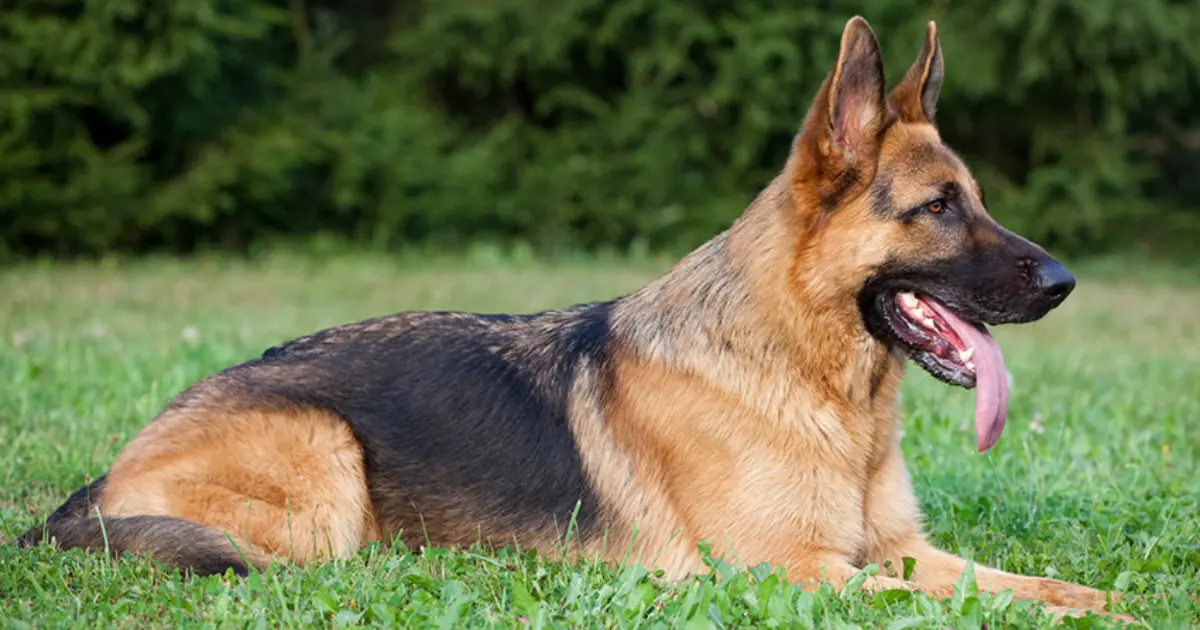
The German Shepherd is one of the most famous dog breeds all over the world due to its high intelligence, bat, and obedience. Another subject of interest in these dogs is the coat which is diverse in quality, structure, and colors. This analysis will help the potential owners and the fans of German Shepherds to better comprehend the topic and to be more attentive to these wonderful animals. Here, we explain the unique German Shepherd coats that exist and the specific care requirements for each of them.
Introduction
German Shepherds primarily have two coat types: The two recognized coats are short featured coat or stock coat and the long featured coat or long stock coat. Caring and size differ from breed to breed as based on the types of coats enumerated earlier in this list. However, under these classes of long and short coated types the fur differs in the look and shades seen within each breed.
1. Short-Haired German Shepherd (Stock Coat)
Most typical of the German Shepherd breed is the short-haired or stock coat so commonly associated with the breed. Here are some of the characteristics of this coat type that make the coat popular and useful.
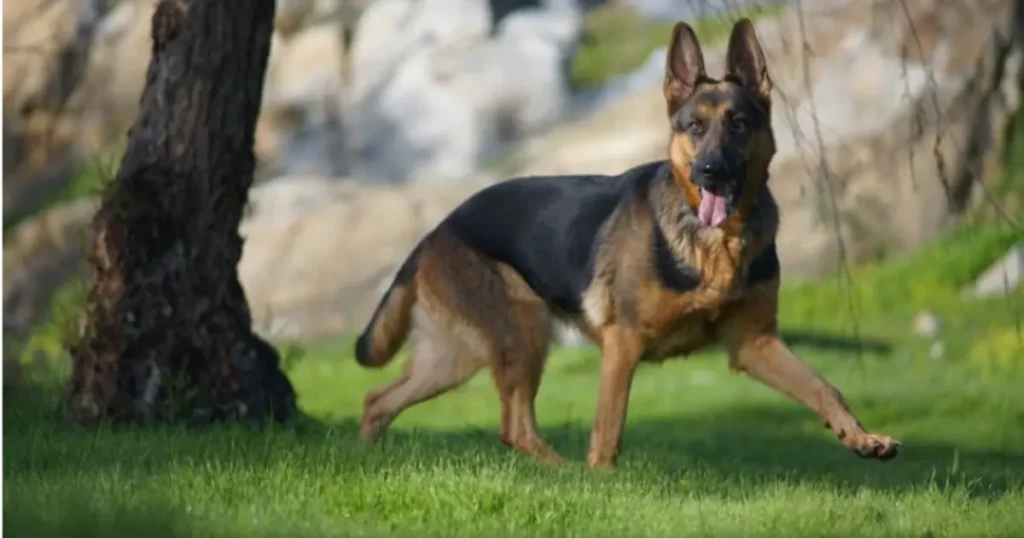
-
Characteristics of the Short-Haired German Shepherd Coat
The short haired German Shepherd particularly has a smooth, dense coat with the stiff straight hairs standing off of its skin to prevent the accumulation of dust and water. It bears a dense undercoat layer that insulates it in both cold and in the hot seasons.
-
Grooming Needs for Short-Haired German Shepherds
Regular grooming is essential for a short-haired German Shepherd coat health and appearance. Weekly brushing removes loose hair and prevents matting. They had their coats all through the year though the molting was more rife during the spring and autumn seasons. Wash only on special occasions, take bath every 2- 3 months, so that the promotion of natural oils does not accentuate skin dryness.
2. Long-Haired German Shepherd (Long Stock Coat)
Long-haired German Shepherd is less common but it looks stunning. This appears as a separate coat type with specifics, grooming needs that set it apart from short haired coats.

-
Characteristics of the Long-Haired German Shepherd Coat
The basic stock German Shepherd coat is smoother than the long-haired fur, which can also have feathers on limbs, ears, and tail. It has wavy to straight hair texture making its appearance of the breed even more desirable. Some breeds have thick undercoats that require a strict combing to avoid getting tangled while they retain the specific looks.
-
Grooming Needs for Long-Haired German Shepherds
Long-haired German Shepherds need daily brushing to avoid matting and maintain a healthy coat. They always molt but they do so intensely during the changes of seasons. Bath the dog every 2-3 months using the product such as dog shampoo and dry the coat well to avoid skin conditions and maintain the health of the German Shepherd coat.
Coat Color Variations in German Shepherds
German Shepherds come in a variety of coat colors, adding to their appeal. Common variations include:
- Black and Tan: Classic look with black saddle and tan or reddish-brown markings.
- Black and Red: Similar to black and tan, but with the richer, redder markings. Popular in show lines.
- Sable: Each hair has multiple colors, giving a wolf-like appearance. Color ranges from light gray to dark black.
- Solid Black: Entirely black coat, striking and uniform. Available in both short and long-haired types.
- White: Pure white coat due to a recessive gene, not recognized by some breed standards but admired for its beauty.
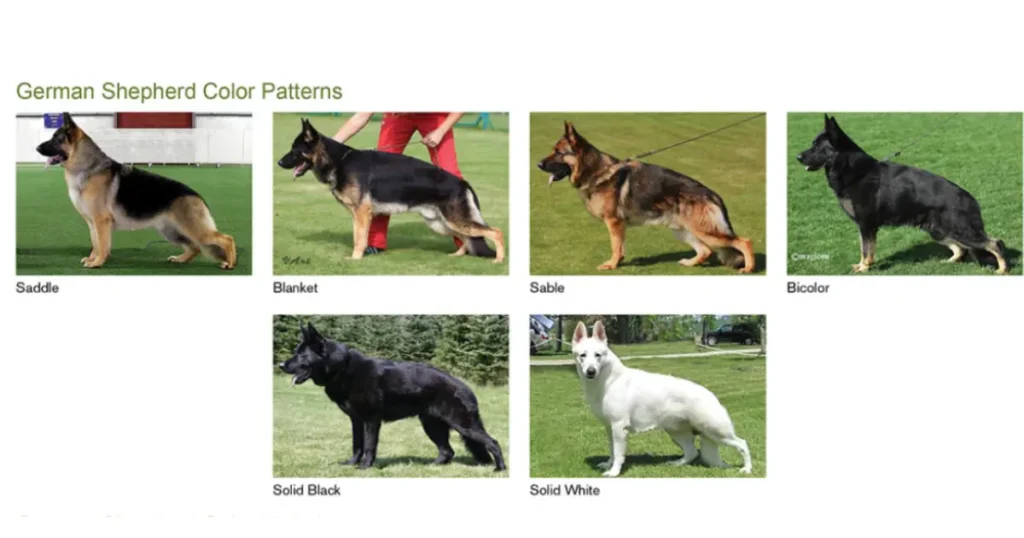
Caring for Your German Shepherd Coat
Proper care of a German Shepherd Coat is important to maintain its health and appearance. Here are some general tips for coat care:
Regular Brushing
Regular brushing is important for all German Shepherds. Short-haired German Shepherds want brushing as soon as a week. Long-haired German Shepherds require each day combing to save tangles and mats. Use a slicker brush to remove loose hair and a comb for untangling.
Bathing
Bathing your German Shepherd each 2-3 months helps maintain coat cleanliness and health. Using a dog-specific shampoo can keep away from skin infection and dryness. It is essential to ensure the coat is completely dried after bathing, particularly for long-haired German Shepherds, to save you skin troubles.
Shedding Management
German Shepherds shed year-round, with heavier shedding durations in spring and fall. Regular brushing can assist in managing shedding, While brushing day by day can assist in losing, more steps which include vacuuming your home greater frequently may be powerful as properly. This is basically genuine, feeding the pet a terrific food containing Omega-3 fatty acids will assist limit excessive coat losing.
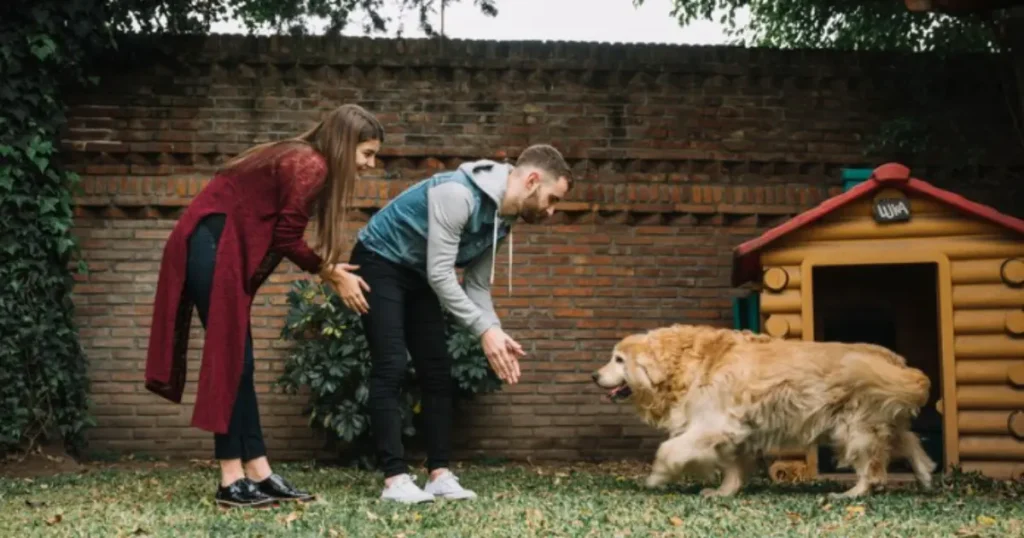
Common Coat Issues and Solutions
German Shepherds, like all dogs, can experience coat and skin issues. Here are some common problem and their solutions:
Dry Skin and Dandruff
Dry skin and dandruff can result from poor diet, low humidity, or excessive bathing. Improving the dog’s diet with top notch food and adding supplements like fish oil can help assist these problems. Avoiding over-bathing as well as using moisturizing canine shampoo.
Hot Spots
Hot spots are bacterial infections caused by scratching or licking. Keeping the affected area clean and dry is vital. Consult a veterinarian for the correct treatment, which may additionally consist of topical medications or antibiotics.
Matting
Matting is a common difficulty, especially for long-haired German Shepherds, and outcomes from neglecting ordinary grooming. Regular brushing and grooming can prevent and resolve matting problems, ensuring the coat remains healthful and attractive.
Conclusion
It is essential to recognize German Shepherd coat kinds. Short-haired and long-haired cats range in their care needs with the intention to remain wholesome and beautiful. Grooming makes your German Shepherd be in proper fitness and also helps you revel in having this form of dog.
FAQs
How many types of coats are there in a German Shepherd?
German Shepherds have two main coat types: short-haired (stock coat) and long-haired (long stock coat).
What type of fur does a German Shepherd have?
German Shepherds have double coats with a dense undercoat and a layer of coarse guard hairs.
Do all German Shepherds have 2 coats?
Yes, all German Shepherds typically have double coats, providing insulation and protection.
What is the rarest German Shepherd coat?
The rarest German Shepherd coat color is the solid white, due to a recessive gene.
Pets and Animal
Top Pet Birds That Talk: Your Guide to Chatty Companions
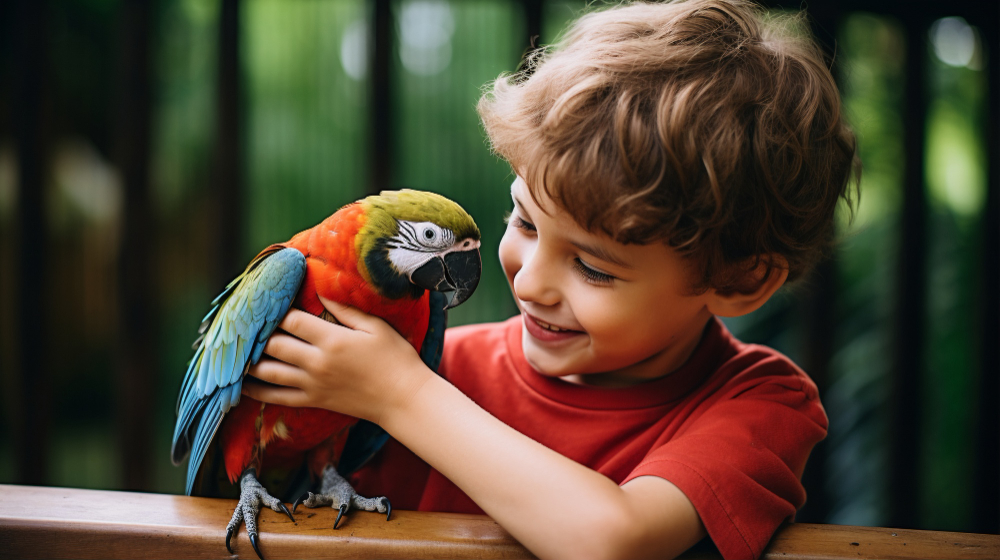
Discover the best pet birds that talk! Find your perfect chatty companion and learn how to care for and train them.
Do you ever wish you had a chatty companion of the feathered variety? Owning a talking pet bird can add so much more to your life of joy and entertainment. Well there are a lot of species of birds, so which of these birds are most likely to mimic human speech?
African Grey Parrot:
The undoubted champ of the talking bird kingdom, the African Grey Parrot can learn a shocking vocabulary of over 1,000 words! These intelligent birds can even recognize the meaning behind some words. However, their challenging nature and long lifespan (up to 23 years) make them a commitment for experienced owners.
Indian Ringneck Parakeet:
Distinctive green with a long tail, this parrot is excellent at mimicking sound, whistles, and even words. Although they sound different and have noticeably higher-pitched voices, Indian Ringnecks are able to mimic up to 250 words and stand out for their playful character.
Cheap Pet Bird Solution:
Budgerigar (Parakeet) The little budgie is among the most popular pet birds in the world, mainly because of how…. As it turns out, these adorable birds are quite good at talking, like, surprisingly good when hand-fed and trained from an early age. They have all the personality and options of speaking a lot of words and phrases that make them common with new and experienced bird owners.
Quaker Parakeet:
Quakers never shut up, and might warble, chirrup, shriek, and cluck data any time of the day and might learn to mimic any speech.
Beyond the Usual Suspects:
Cockatiel:
While not all cockatiels talk, some can learn a surprising number of words and phrases. These fascinating birds are very friendly; they are beautiful to listen to and they are very gentle making them excellent home companions.
Amazon Parrots:
The most popular and relatively easy to maintain Amazon parrot species include the double-yellow headed Amazon which, when matured, can be quite vigorous with its squawking. These are very smart birds and are very active and need a lot of interaction as well as mental stimulation and effort is needed, they can even mimic human speech and people can bond with them deeply making them very companionable pets.
Important Deliberations:
This should be done with the understanding that most birds in a given species will not be able to mimic and some might only be able to repeat only a few phrases, even if trained properly. Some experts have categorized talking skill as the global skill that is influenced through personality, request to signal, and training.
Having birds as pets is a long term decision you are making. These animals require individual attention and proper treatment, namely proper supply of oxygen, balanced diet, and appropriate exercises for their minds. Before adopting any feathered friend, ensure that you can be in a position to feed him or her at a particular time.
Ready to Find Pet Birds That Talk?
Alternatively, any of these could make for an ideal companion for those who want a chatty, cute bird. The specifics of each bird species should also be looked into to make sure would would be able to give them a home that will surely inspire them. Yet, if you give it proper care and teaching, you’ll be amazed at just how fluent your new companion, the pet bird, might be.
-

 Health11 months ago
Health11 months agoDiscover ://vital-mag.net Blog: Expert Tips for Total Wellness
-

 Business12 months ago
Business12 months agoTikTok Affiliate Marketing | A Complete Guide for Marketers and Creators |
-

 entertainment5 months ago
entertainment5 months agoTop 7 Occasions to Send a Thank You Card and Why They Matter
-

 Home and Gardening11 months ago
Home and Gardening11 months agoSunset Gardens Apartments: Complete Guide
-

 entertainment5 months ago
entertainment5 months agoCelebrate Life: The Pleasure in Sending Birthday Cards
-

 Health11 months ago
Health11 months ago7 Day Juice Fast Weight Loss Results: Expectations & Strategies
-

 Life style12 months ago
Life style12 months agoWhy i stopped eyelash extensions?
-

 Business11 months ago
Business11 months agoSecret Strategies of Competent Trading Companies
